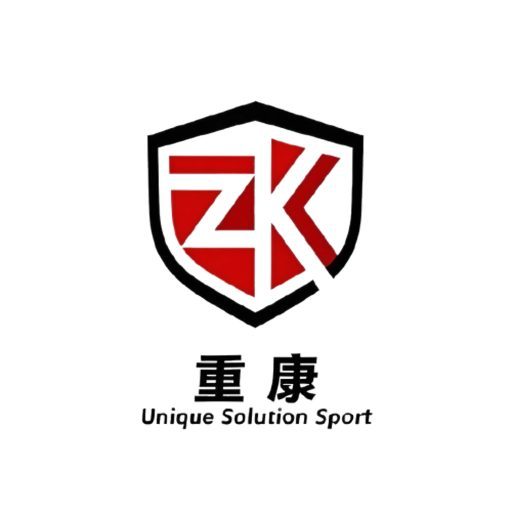Impact of GST Rate on Sports Jersey Prices: An IT-Driven Analysis and Market Response Strategies
With the continuous growth of the worldwide sports marketplace, jerseys, as an critical a part of sports lifestyle, have been laid low with GST (items and services Tax, value brought Tax). this newsletter will talk the impact of GST on jersey fees, as well as the consequences of tax charge changes at the deliver chain and adjustments in client buying prices. it will also advocate techniques and guidelines for the industry to respond.
Cost Analysis of Uniform Production
The primary fee of producing soccer jerseys lies within the raw materials, such as fabrics, sewing threads, buttons, and so forth. the choice of fabric directly influences the durability and appearance of the jerseys, with high-quit fabric like polyester and nylon being notably highly-priced. even though such as stitching threads and buttons account for a small element, their nice also impacts the overall fee.
labor prices: The hard work cost all through the manufacturing system of football jerseys cannot be ignored. each step, from reducing to sewing and very last fine inspection, calls for skilled workers. because the hard work marketplace modifications, labor costs growth yr by 12 months, specially in areas concentrated with exertions-intensive industries.
gadget Depreciation: The manufacturing device used for football jersey manufacturing, including sewing machines and slicing machines, requires regular preservation and updates. The depreciation cost of equipment is a giant factor of the manufacturing price, particularly for older device wherein upkeep and replacement prices are excessive.
energy consumption: electricity consumption in the production system of the factory is also a non-negligible fee. This includes energy and fuel, amongst different things, and these energy fees differ with market changes, directly impacting the overall production prices.
layout and R&D: The layout and studies and improvement of football jerseys also are part of the value. The effort and time invested in designers’ creativity, sample layout, and fashion changes all require enter, and those layout costs are regularly pondered inside the product pricing.
Packaging and Logistics: The prices of packaging and logistics for football jerseys are also big. This includes packaging materials and transportation fees, which can affect the very last cost, in particular in a globalized production version wherein lengthy-distance transportation increases logistics fees.
quality manipulate: To make certain the excellent of soccer jerseys, strict nice manipulate is required in the course of the production technique. This includes uncooked material inspection, production method tracking, and completed product inspection, all of which require human and cloth sources, for that reason increasing prices.
marketing and merchandising: The manufacturing of branded soccer jerseys frequently includes positive advertising and advertising expenses. This consists of advertising and marketing, promotional sports, and exhibition participation, among others. despite the fact that these fees aren’t immediately covered in the manufacturing price, they may be an important part of logo building and product sales.
In precis, the manufacturing fee of soccer jerseys consists of a couple of elements, such as uncooked materials, hard work, device depreciation, energy consumption, layout and R&D, packaging and logistics, high-quality manage, and advertising and merchandising. The cost manage at each degree has a widespread effect on the final product fee.

The impact of GST on jersey prices
The production of group jerseys entails more than one procedures, consisting of design, reducing, sewing, and printing, each of which impacts the final value. cloth price is a significant element of the jersey rate, with considerable rate variations because of exceptional substances, manufacturers, and satisfactory. additionally, unique approaches like embroidery and warmth transfer printing also can boom costs. for the duration of production, exertions prices, system depreciation, and strength intake are also critical charges. With the intensification of marketplace opposition, jersey manufacturers regularly need to strictly control charges even as making sure first-class to keep fee competitiveness.
Fluctuations in material prices have a enormous impact on jersey expenses. factors inclusive of uncooked cloth costs and change fee fluctuations can motive dramatic changes in material fees. as an instance, an boom in cotton costs will directly push up the value of cotton jerseys. moreover, changes in import price lists on fabric can circuitously affect home jersey production costs.
exertions costs account for a positive percentage in jersey production. With adjustments within the hard work marketplace, hard work charges have been growing 12 months with the aid of yr. mainly in hard work-intensive industries inclusive of jersey manufacturing, the growth in labor costs poses better requirements for usual fee control. To reduce hard work expenses, some producers opt for computerized production to improve efficiency.
equipment depreciation and energy consumption are also essential components of jersey manufacturing expenses. advanced production equipment can growth production performance, but it additionally approach higher depreciation prices. In phrases of power intake, the lighting, heating, and cooling in factories consume a huge amount of energy, which is also a key point for value manipulate.
With the implementation of GST (items and services Tax), the jersey production expenses have undergone new adjustments. GST, as a consumption tax, has impacted each manufacturing and sales tiers. in the jersey production procedure, all materials, equipment, and strength required are issue to GST, which without delay increases production charges.
The GST at the sales level additionally impacts jersey prices. while promoting, jersey manufacturers need to fee clients GST, main to an increase inside the final selling charge. For clients, the fee growth of jerseys way an boom in buy prices.
To cope with the improved expenses introduced about by means of GST, jersey manufacturers have adopted numerous techniques. On one hand, they goal to lessen unit fees with the aid of optimizing production tactics and improving performance; on the other hand, they alter product systems thru market research to satisfy consumers’ fee-sensitive needs. furthermore, a few producers are looking for to establish lengthy-time period partnerships with suppliers to stabilize uncooked fabric expenses.
In precis, the impact of GST on jersey charges is multifaceted, inclusive of each improved manufacturing costs and higher promoting expenses. confronted with this task, jersey producers want to innovate constantly and beautify their competitiveness to adapt to market adjustments.

Effect of Tax Rate Adjustments on the Supply Chain
The adjustment of GST (goods and services Tax) quotes has a significant effect on the garb supply chain, affecting diverse stages from raw cloth procurement to the final product’s delivery. here is an in depth analysis of the precise effects of tax fee changes on the supply chain:
accelerated fabric fees: With the rise in GST charges, the cost of raw materials required for apparel manufacturing, including fabric, stitching threads, buttons, and many others., additionally increases. As GST is an oblique tax, suppliers must charge extra taxes on sales, main to extended procurement prices for apparel manufacturers.
accelerated production fees: for the duration of the manufacturing process, which incorporates sewing, slicing, printing, and different levels, GST is likewise applicable. The upward thrust in tax quotes provides to the tax burden in the production phase, immediately pushing up the value of clothing manufacturing.
increased Logistics charges: The transportation of apparel from the factory to shops or consumers additionally involves GST. With the increase in tax charges, logistics costs rise further, contributing to the better final promoting fee of apparel.
expanded supply Chain Financing stress: The upward thrust in GST costs places extra economic pressure on businesses inside the supply chain. mainly for small and medium-sized apparel manufacturers, the tight funding state of affairs may cause a discount in manufacturing scale or even have an effect on the survival of the organisation.
accelerated trouble in inventory control: The fluctuation of GST prices makes inventory control more hard for apparel producers. After the charge adjustment, the price of stock items changes, and the enterprise desires to re-evaluate stock prices and regulate stock techniques.
prolonged Order Processing Cycle: After the tax rate adjustment, garb producers need to don’t forget extra tax elements while processing orders, which includes the effect of tax fee changes on order charges and tax compliance. those factors can cause an extended order processing cycle, affecting the speed of shipping.
expanded market opposition: The rise in GST prices leads to a widespread increase in clothing prices, which in turn reduces patron buying power. underneath such occasions, market opposition intensifies, and businesses can also need to undertake price discount strategies to keep market share, further compressing income margins.
expanded value of Tax Compliance: After the charge adjustment, companies need to invest extra resources in tax compliance, such as tax consulting and internal education. The growth in those prices has an impact at the employer’s operations.
In precis, the adjustment of GST prices has a big effect at the garb deliver chain, affecting all ranges from raw fabric procurement to the very last sale. For clothing manufacturers, the way to deal with the challenges delivered through tax charge changes is an pressing issue to be addressed.

Changes in consumer purchase costs
The adjustment of the GST (goods and services Tax) rate for football jerseys at once impacts their production fees, which in flip passes on to the client give up. right here is a detailed description of the way this influences the fee of purchasing football jerseys for clients:
The rise in fees results in an growth in jersey expenses. With the increase inside the GST price, soccer jersey producers will see their expenses rise in numerous stages, along with raw fabric procurement, manufacturing processing, and logistics transportation. these extended expenses are in the end surpassed on to customers, resulting in better retail costs for football jerseys.
customers emerge as more charge-sensitive. Following the charge adjustment, clients will pay extra attention to the price aspect whilst buying football jerseys. The heightened price sensitivity indicates that clients may be greater touchy to charge changes, especially at some point of monetary downturns or while purchaser profits boom slows down.
An growth in promotional activities. to alleviate the pressure from the GST rate adjustment, soccer jersey producers might also growth promotional activities to attract consumers. This includes strategies consisting of discounts, bundle income, and time-restrained promotions to lessen patron purchase prices.
more careful purchasing selections. With the increase in jersey expenses, customers may additionally come to be extra cautious of their purchases, thinking about elements together with value-overall performance and brand loyalty. This careful technique might also result in a decrease in shopping frequency, in particular for non-critical football jersey merchandise.
An energetic 2d-hand marketplace. in the case of higher jersey fees, a few purchasers may additionally turn to the second-hand market to locate cheaper jerseys. The improved activity within the 2nd-hand market might also hence affect new jersey sales.
brand differentiation strategies become apparent. a few brands may additionally reply to the accelerated charges by way of emphasizing product differentiation, together with enhancing material fine and layout innovation, to draw customers inclined to pay greater for products.
extended consumer cognizance of tax policies. After the price adjustment, customers have a deeper information of the GST coverage and its impact on each day intake, which can also prompt more attention and dialogue on authorities tax rules.
In summary, the adjustment of the GST charge has a large effect on the fee of purchasing football jerseys for customers, now not simplest, however additionally impacts purchaser shopping behavior and market dynamics.

Industry Response Strategies and Recommendations
as the charge of jerseys increases, the value of purchase for customers also rises. brands and producers need to take measures to mitigate this impact. right here are a few possible strategies and tips:
value manipulate: manufacturers and producers have to evaluation their production procedures to find opportunities for fee reduction. this can consist of optimizing raw fabric procurement, improving manufacturing efficiency, decreasing waste, and in search of greater price-effective supply chain partners.
Product Differentiation: via introducing product lines at different rate factors, brands can cater to the desires of different purchasers. high-end products can keep their original pricing, while mid to low-quit products can modify fees to adapt to marketplace adjustments.
market position Adjustment: brands may additionally need to modify their market positioning to target specific marketplace segments. for instance, product strains aimed at price-sensitive customers can adopt more inexpensive production techniques to decrease fees.
Promotional activities: Attracting customers via promotional events, discounts, and restrained-time offers can quickly reduce the perceived price of buy for purchasers. This method should be used carefully to keep away from adverse the logo picture.
Transparency Enhancement: communicating in reality to clients about the impact of GST and the way the emblem is addressing it could growth consumer accept as true with. thru transparent communique, manufacturers can reveal their sense of social obligation and commitment to the marketplace.
flexible Pricing strategies: manufacturers may additionally don’t forget adopting dynamic pricing fashions to flexibly alter costs based totally on marketplace demand and value adjustments.
supply Chain Optimization: building closer relationships with providers to collaboratively find approaches to lessen expenses. this could involve sharing inventory, joint procurement, or co-developing extra value-powerful manufacturing technologies.
client training: via instructing customers and spreading records, help them apprehend the effect of GST and manual them to recognition on the lengthy-term cost of jerseys rather than quick-term prices.
Diversification of revenue resources: manufacturers can develop new resources of sales, which includes licensing, collaborations, or launching related products, to diversify their reliance on jersey income.
market studies: everyday marketplace studies to understand client charge sensitivity and purchasing behavior can help brands regulate their strategies in a well timed way.
via these techniques and hints, brands and manufacturers can better control adjustments in client buy expenses after the adjustment of the GST fee, whilst retaining emblem competitiveness and market position.






